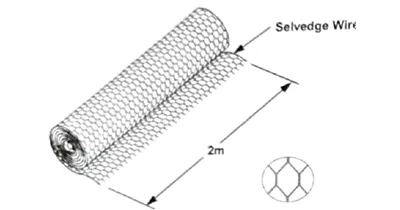-
 Phone:
Phone: -
 Email:
Email:

Exploring the Benefits and Applications of Rock Netting in Landscape Engineering
Understanding Rock Netting A Protective Solution for Erosion Control
In recent years, the increasing intensity of weather events and human activities has raised significant concerns about soil erosion and slope stability. One effective solution that has gained popularity in civil engineering and environmental management is rock netting. This technique not only enhances landscape aesthetics but also offers robust protection against erosion, landslides, and other geological hazards.
Rock netting involves the use of high-strength nets made from steel or polymer materials, which are strategically placed over slopes or eroded areas. These nets serve a crucial role by holding loose rocks and soil in place, effectively preventing them from sliding down. The nets can be tailored to various geometries, making them suitable for different terrains and environmental conditions.
The primary advantage of rock netting is its ability to provide immediate stabilization to slopes, particularly in areas prone to heavy rain, wind, or seismic activity. By reinforcing the soil structure, rock netting mitigates the risk of landslides, which can have devastating effects on infrastructure, ecosystems, and human safety. Moreover, this method is often more cost-effective compared to more invasive engineering solutions like retaining walls or extensive excavation.
In addition to their protective capabilities, rock nets can promote vegetation growth. Over time, the netting provides a substrate for soil accumulation, allowing seeds to germinate and roots to establish. This not only helps to further stabilize the slope but also enhances biodiversity and contributes to environmental restoration efforts. The combination of natural plant growth and artificial stabilization creates a sustainable approach to managing erosion.
rock netting

Implementing rock netting requires careful planning and execution
. Engineers and environmental scientists assess the specific needs of an area, including soil type, slope angle, vegetation cover, and potential external forces. This comprehensive analysis ensures that the right materials and techniques are employed for effective results. Regular monitoring and maintenance are also essential to address any wear and tear that may occur over time, thereby prolonging the lifespan of the installation.One notable example of rock netting in action is seen in areas affected by wildfires. Following such natural disasters, the soil can become extremely vulnerable due to the loss of vegetation. Rock netting is often deployed to protect the newly exposed soils from erosion during rain events. These measures not only safeguard the landscape but also prevent sedimentation in nearby water bodies, helping to preserve aquatic ecosystems.
As climate change continues to influence weather patterns and increase the severity of natural disasters, innovative solutions like rock netting will be crucial in enhancing resilience in vulnerable regions. By offering an effective means to combat soil erosion and promote ecological recovery, rock netting stands out as a sustainable practice that merges engineering with environmental stewardship.
In summary, rock netting is a versatile and effective solution for addressing soil erosion and landslide risks. Its ability to stabilize slopes, foster vegetation growth, and adapt to varying environmental conditions makes it an invaluable tool in civil engineering and environmental management. As we strive to protect our landscapes and ecosystems, techniques like rock netting offer hope for a more resilient future.
-
Wire Mesh for Every Need: A Practical SolutionNewsJul.25,2025
-
Steel Fences: Durable, Secure, and Stylish OptionsNewsJul.25,2025
-
Roll Top Fencing: A Smart Solution for Safety and SecurityNewsJul.25,2025
-
Cattle Farm Fencing Solutions for Maximum SecurityNewsJul.25,2025
-
Affordable Iron Binding Wire SolutionsNewsJul.25,2025
-
Affordable Galvanized Wire SolutionsNewsJul.25,2025
-
Wire Hanger Recycling IdeasNewsJul.25,2025








